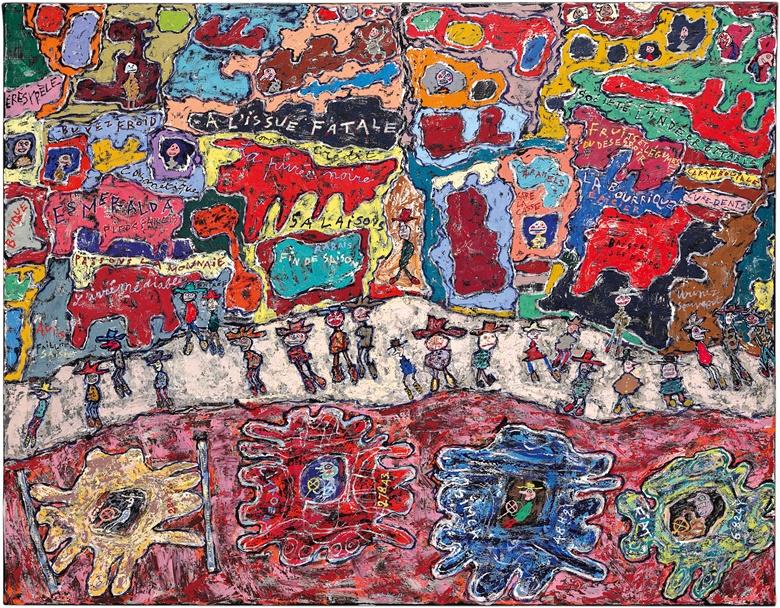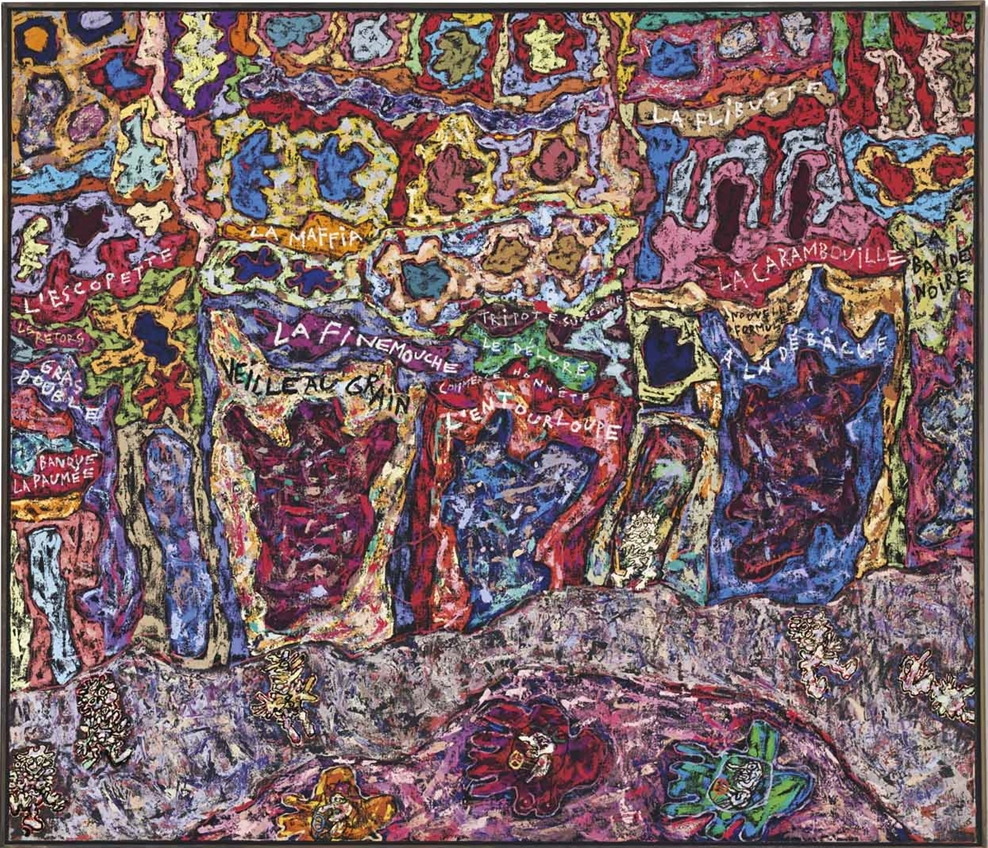Dubuffet

Christie’s will highlight its November 15th Evening Sale of Post-War and Contemporary Art with Jean Dubuffet’s Les Grandes Artères, 1961 ($15-20million). Les Grandes Artères is a masterful canvas from Dubuffet’s celebrated Paris Circus series*, a body of work which is regarded by many Dubuffet scholars as marking the pinnacle of the artist’s career. With its vibrant palette, sense of energy and the individuality that Dubuffet instills in each of his characters, Les Grandes Artères, is one of the artist’s most accomplished compositions from Paris Circus.
Many examples from this series are housed in important international collections including the Tate Gallery, London; Solomon R. Guggenheim Museum, New York; National Gallery of Art, Washington D.C., and the Centre Georges Pompidou, Paris. Les Grandes Artères has been in the same private American collection since 1964, and has not appeared publicly since 1973, when it was featured in the Guggenheim’s Dubuffet retrospective.
Brett Gorvy, Chairman and International Head of Post-War and Contemporary Art, remarked: “Les Grandes Artères is an extraordinarily vibrant and complex canvas that encapsulates the vitality of Paris, and the dynamism of city life. The detail with which he depicts each of his figures gives them their own individual character and the line-up of glamorous cars shows what a cosmopolitan city Paris had become—a scene which Dubuffet captures this with particular skill and spirit. We are particularly pleased to be bringing this work to auction on the heels of a pinnacle year for Dubuffet, which included a range of important international exhibitions of his work. With a retrospective at the Fondation Beyeler, a monographic show at the Acquavella Gallery in Manhattan, and an installation of his monumental sculpture, Welcome Parade, in front of New York’s historic Seagram Building, it is clear that the global interest in Dubuffet has never been stronger.”
Across its surface Dubuffet convenes a cast of characters, which expertly capture the sense of liberation enjoyed by Paris as it emerged from the darkness of the Second World War. Using his signature naïve style, Dubuffet lays out the French capital’s grand boulevards filled with bustling shops, cars and people.
In this bold and vibrant canvas, Dubuffet packs the surface with the energy and exuberance that he witnessed after his return to the French capital. Dubuffet’s breakthrough came in February 1961 when the force of this powerful revelation gave birth to the artists most illustrious and sought-after series, Paris Circus.
Returning to Paris after a six-year self-imposed hiatus in the countryside of southern France, Dubuffet’s Paris Circus paintings signal the artist’s vivacious rediscovery of city life.
Captivated by the energy coursing through the Parisian streets, Dubuffet was swept up in the whirl of the city bustling with cars and people. Infused with a high degree of shrewdness and wit, the shop lined street is flanked by businesses of the artist’s own creation. In addition to the archetypal city establishments – a bank, a cosmetics store – Dubuffet depicted storefronts with signage, which satirize the rampant consumerism that he saw pervading society.
A few examples include: Fruits et legumes du desespoir (fruits and vegetables of despair), A l’issue fatale (fatal outcome) and Societe l’indercrottable (hopeless society). Even the four cars at the bottom of the composition are specific brands: Ford, Citroën, Simca, Fiat.
Throughout the 1960s, an intoxicating postwar energy swept the globe, in which every day phenomena were seen through fresh, excited eyes. In America, Pop Art was born, investigating the unique auras surrounding quotidian objects and fearlessly appropriating the daily images that flooded the collective consciousness. In France, amidst the throes of New Wave cinema and sexual revolution, Dubuffet created a new liberated language that sought to convey the unbounded joy of daily living.
Les Grandes Artères conjures a new artistic handwriting, equipped to translate sensory experience and, in doing so, to suggest new ways of comprehending our daily existence.
The world auction record for Jean Dubuffet is currently held by Paris Polka, 1961, which is also from Dubuffet’s Paris Circus series. The record was achieved at Christie’s New York in May 2015, when it realized $24,805,000
Kandinksky
Conor Jordan, Deputy Chairman of Impressionist and Modern Art, remarked: “With its dynamic sweep of upward energy, Kandinsky’s Rigide et courbé, a late masterpiece from the mid-1930s, unseen in public for over fifty years, evokes an epic paean, a rhapsodic song of thanksgiving suggesting the bright hope the artist saw in his new home in Paris following his flight from Nazi Germany. Abstract forms, runic symbols and mythic references, summoning Kandinsky's life and career, intertwine with veiled allusions to contemporary events, across the broad dimensions of this technically audacious canvas which is richly worked in oil and sand. It ranks among the greatest Kandinskys still in private hands.”

